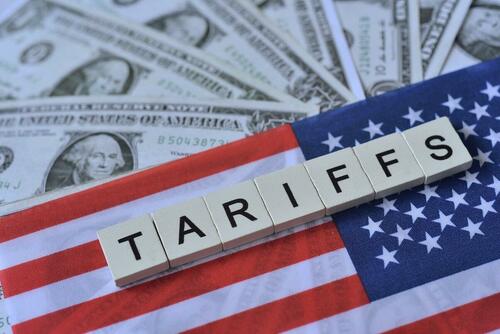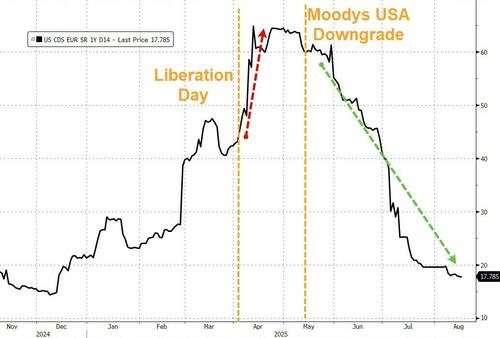S&P Global Ratings affirmed the United States’ sovereign credit ratings, saying tariff revenues under the Trump administration’s new trade policies should help cushion the fiscal impact of recent tax and spending legislation.
The ratings agency kept the U.S. at AA+/A-1+ with a stable outlook.
“The stable outlook indicates our expectation that although fiscal deficit outcomes won’t meaningfully improve, we don’t project a persistent deterioration over the next several years,” S&P said in its statement.
The firm pointed to broad economic resilience, policy continuity, and strong revenue streams, including what it described as “robust tariff income” – as offsets to fiscal slippage stemming from legislative changes. While acknowledging concerns that tariffs could dampen business confidence, growth, and hiring while spurring inflation, S&P said revenue gains would help balance the ledger, WSJ reports.
The agency’s decision comes against the backdrop of a $5 trillion increase in the debt ceiling and projections that net general government debt will approach 100% of gross domestic product, driven by “structurally rising non-discretionary interest and aging-related expenditure.”
S&P cited several strengths underpinning the rating, including the resilience of the U.S. economy, effective monetary policy, and a deficit trajectory that, while elevated, isn’t accelerating.
USA sovereign credit risk, meanwhile…
Yet the firm also noted risks…
“Bipartisan cooperation to strengthen the U.S. fiscal profile – namely to meaningfully lower deficits and tackle budgetary rigidities – remains elusive,” S&P said.
The agency warned that the outlook could turn negative if deficits widen further due to political stalemates or if revenue losses from tax policy changes aren’t contained. It also flagged the independence of the Federal Reserve as a critical factor.
“We could lower the rating over the next two to three years if already high deficits increase, reflecting political inability to contain rising spending or to manage revenue implications from changes in the tax code,” S&P said. “The ratings could also come under pressure if political developments weigh on the strength of American institutions and the effectiveness of long-term policymaking or independence of the Federal Reserve.”
Any erosion in institutional credibility, the agency added, could eventually imperil the dollar’s status as the world’s leading reserve currency—a key pillar of U.S. credit strength.
Loading recommendations…



















